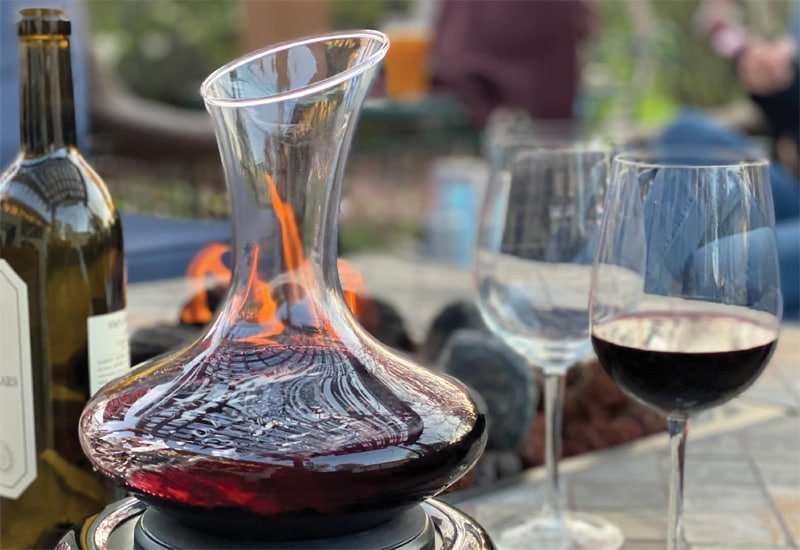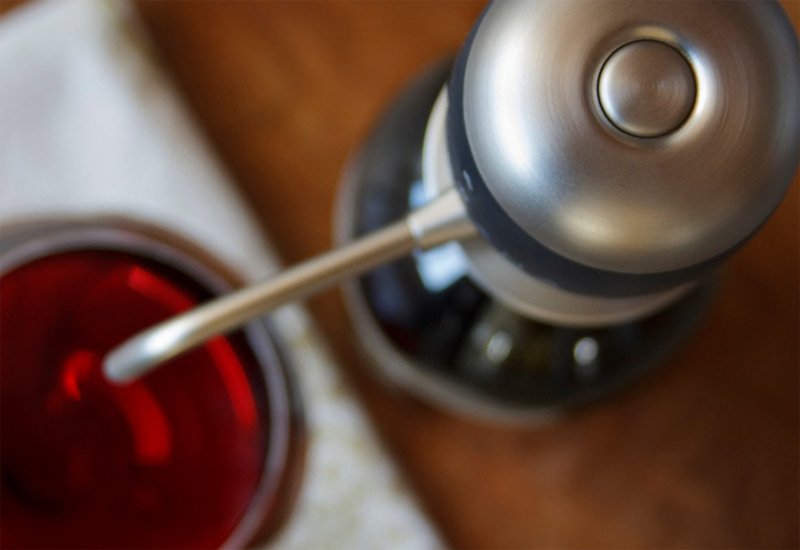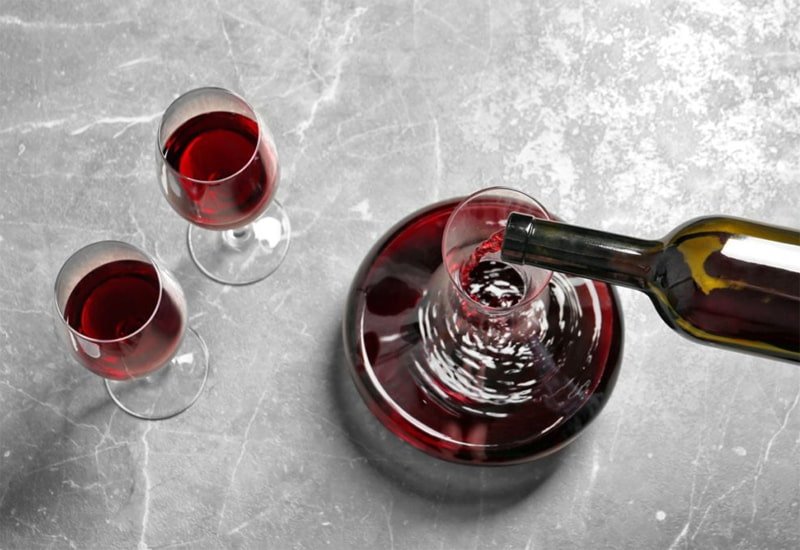What Does A Wine Aerator Do? (Benefits, Types, Wines You Should Aerate)
If you’ve ever sipped on a bold red wine that was poured directly from bottle to glass, you may recall being hit by overpowering aroma and flavor notes.
Any wine lover will tell you the only way to smoothen out the tannic flavor of a young red wine, for example, is through wine aeration.
The good news is you can easily do this with the help of a wine aerator.
This handy little gadget is something you fix on top of your wine bottle to introduce oxygen to the wine when you pour a glass.
This article will explore all about wine aerators, what they do, the types of wine aerators, other ways you can aerate wine, and which wines you should aerate.
Further reading
- Discover all about Decanting Wine - when, why, and how to do it right!
- Also, find out How to Drink Wine Like a Pro to elevate your drinking experience.
What Does A Wine Aerator Do?

A wine aerator forces the wine to interact with air through a funnel of pressurized oxygen.
This instant aeration process speeds up the:
- Oxidation: When the wine is exposed to a lot of oxygen, some compounds, like ethanol (alcohol), go through a chemical reaction. This process helps reduce the pungent smell you sometimes get as soon as you open a bottle of wine.
- Evaporation: The aeration also results in the evaporation of sulfites and ethanol. This helps to reduce the sulfuric notes you may taste and smell in a wine.
Why Do You Need A Wine Aerator?

Here’s why you should consider adding a wine aerator to your repertoire:
- It takes the wine’s aroma and flavor profile to the next level: Once you’ve aerated your wine, the volatile aromas of sulfur and ethanol will disappear. This way, your aerated wine develops a softer and more enhanced flavor profile, allowing you to taste the whole array of subtle and complex notes.It lets the wine breathe quickly: Aerating wine speeds up the wine breathing process and allows you to enjoy it right away.
- It saves money: A wine aerator will make cheap wine taste expensive if you’re drinking on a budget. So you don’t have to break the bank to enjoy your wine.
What Other Ways Can You Aerate Wine?

Some other options to consider for aerating your wine include:
- Pouring the wine into a decanter: Unlike a wine aerator that oxidizes one pour at a time, a wine decanter (a vase-shaped vessel) lets you aerate an entire bottle of wine.
Just pour the wine from the bottle into the decanter. Then let the wine breathe for anywhere between 15 minutes up to a couple of hours (depending on the wine style.)
Pouring the wine into a decanter also helps you remove the sediment particles from the clear liquid (if you’re dealing with an old wine.)
- Swirling the wine in a glass: All you have to do is pour the wine into your glass and swirl the liquid around. This introduces small amounts of air to the liquid, so you need to wait a few minutes before sipping.
What Are The Different Types Of Wine Aerators?

Here are the types of wine aerators to keep an eye out for:
- Handheld wine aerator: You hold this over a wine glass and pour the wine through it. This accessory has an aeration section that collects and airs some of the wine before funneling it into your glass.
- Wine aerator pourer: A wine aerator pourer has a funnel that hooks onto the top of the bottle. The wine passes through an aeration chamber before making it into your glass.
- Electric wine aerator: With an electric wine aerator, the wine is sucked into an aerator chamber and then poured into the glass with just a push of a button.
Which Wines Should Be Aerated?

Here’s what you need to know:
- Red wine: Most red wine can benefit from some aeration, particularly cheap wine. A young wine with complex tannin textures and full-bodied red wine (like most Cabernet Sauvignon and Syrah) also benefit from aeration.A wine aerator can also filter out the sediment of older wines. However, if it is a very fragile, aged wine, opt for aeration with a decanter instead. Lighter-bodied wines like Pinot Noir may not need any aeration.
- White wine: It’s best to aerate white wine that’s heavier and full-bodied such as wines from Burgundy, Bordeaux, and Alsace. But if you’re dealing with a younger wine, you can skip the aeration since young whites hardly have any tannins.
- Sparkling wine: Bubbly wines usually don’t need aeration.
A Wine Aerator: The Perfect Tool For Any Wine Lover
A wine aerator is a tool almost any sommelier has in his repertoire and is an ideal present for any wine enthusiast. It’s also a great conversation starter when you whip it out at a dinner party and it makes your wine taste infinitely better!

Aeration aside: if you’d like to invest in a decadent Pinot Noir, a bold Cabernet Sauvignon, or any other collectible wine, visit the Vinovest website. It’s a wine investment platform that will let you buy, store, and sell your bottles of fine wine easily.



